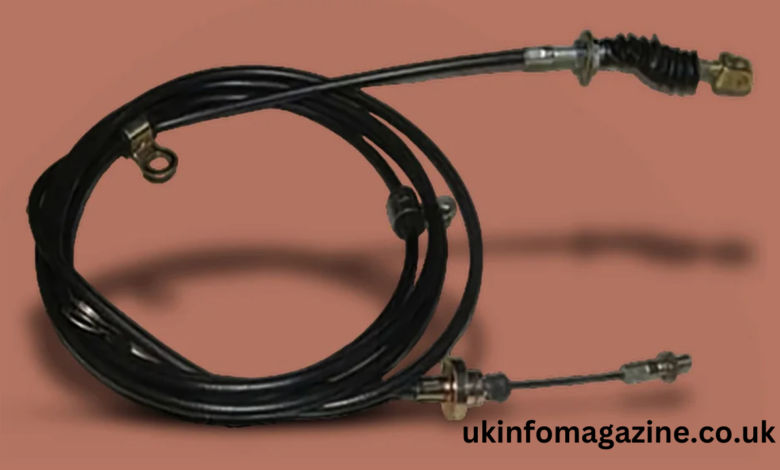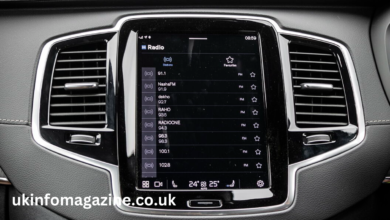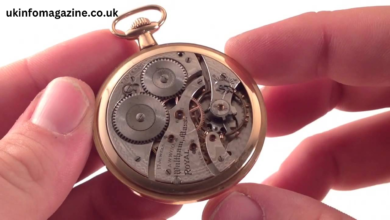Throttle Cable The Essential Link Between Your Accelerator and Engine

A throttle cable is a fundamental component of many vehicles, including cars, motorcycles, and other machines with internal combustion engines. It plays a crucial role in regulating engine power by transmitting input from the accelerator pedal or throttle grip to the engine’s throttle body or carburetor. Despite advancements in drive-by-wire systems, thro ttle cables remain widely used due to their reliability, simplicity, and cost-effectiveness.
In this comprehensive guide, we will explore everything you need to know about thro ttle cables, including their function, types, maintenance, common issues, replacement procedures, and improvements. By the end of this article, you will have a deep understanding of thro ttle cables and their significance in vehicle performance.
What Is a Throttle Cable?
A thro ttle cable is a mechanical control cable that links the accelerator (pedal or handlebar grip) to the throttle mechanism of an engine. When you press the accelerator pedal in a car or twist the throttle grip on a motorcycle, the cable transmits this motion to open the throttle, allowing more air and fuel into the engine, which increases power and speed.
Unlike modern electronic throttle control (ETC) systems, which use sensors and actuators, a throttle cable provides a direct mechanical connection. This makes it an essential component in many vehicles, particularly older models and motorcycles.
Components of a Thro ttle Cable
A thro ttle cable consists of several parts that work together to ensure smooth operation:
- Inner Cable – A strong, flexible steel wire that transmits motion from the accelerator to the throttle body.
- Outer Sheath – A protective casing around the inner cable, often lined with low-friction material like Teflon to ensure smooth movement.
- End Fittings – Metal or plastic connectors that attach the cable to the accelerator pedal or grip and the throttle linkage.
- Adjusters – Some throt tle cables include adjustable fittings that allow you to fine-tune cable tension for precise throttle control.
Types of Throttle Cables
Thro ttle cables come in different types depending on their application and design. Here are the main types:
1. Single Thro ttle Cable
- Found in basic carbureted motorcycles, ATVs, and small engines.
- It pulls the throttle open when the accelerator is engaged and relies on a return spring to close it.
2. Dual Thro ttle Cable (Push-Pull Cable System)
- Common in modern motorcycles and high-performance vehicles.
- Includes both a pull cable (opens the throttle) and a push cable (helps close the throttle).
- Provides better control and safety by ensuring the throttle closes fully.
3. Custom Performance Thro ttle Cables
- Designed for racing or modified engines where smooth and responsive throttle operation is critical.
- Often made with high-quality materials for reduced friction and increased durability.
How a Thro ttle Cable Works
The operation of a throttle cable is straightforward but essential for vehicle performance. Here’s a step-by-step breakdown of how it works:
- Accelerator Input – When you press the gas pedal (or twist the throttle grip), the inner cable is pulled, moving the throttle linkage.
- Throttle Opens – The movement of the cable opens the throttle valve, allowing more air and fuel into the engine.
- Increased Engine Speed – The added air-fuel mixture increases combustion, causing the engine to produce more power.
- Return Mechanism – When you release the accelerator, the return spring pulls the throttle back to its idle position.
Common Thro ttle Cable Problems and Their Solutions
Like any mechanical component, thro ttle cables can develop issues over time. Below are some of the most common problems and how to fix them.
1. Stiff or Sticky Throttle
Causes:
- Dirt, rust, or debris inside the cable housing.
- Lack of lubrication.
- A bent or damaged outer sheath.
Solution:
- Clean and lubricate the cable using a dedicated throttle cable lubricant.
- Replace the cable if it is damaged or excessively worn.
2. Frayed or Snapped Cable
Causes:
- Excessive wear and tear over time.
- Poor quality or improperly routed cables.
Solution:
- Inspect cables regularly for signs of fraying.
- Replace a damaged cable immediately to prevent sudden throttle failure.
Previous article; Hookless Dobby pique mystery shower curtain white color
3. Loose or Slack Cable
Causes:
- Improper adjustment.
- Cable stretching over time.
Solution:
- Adjust the thro ttle cable tension using the built-in adjuster or by modifying the mounting points.
4. Throttle Sticking Open
Causes:
- A kinked cable or internal obstruction.
- A faulty return spring.
Solution:
- Check the cable routing and ensure there are no sharp bends.
- Replace the return spring if it’s weak or broken.
How to Replace a Throttle Cable
If your thro ttle cable is worn out or damaged, replacing it is crucial for safe operation. Follow these steps for a smooth replacement process:
Tools Needed:
- Screwdrivers
- Wrenches
- Pliers
- Lubricant
- New thro ttle cable
Step-by-Step Guide:
- Locate the Thro ttle Cable – Identify where the cable connects to the throttle body and accelerator pedal/grip.
- Remove the Old Cable – Detach the cable from both ends, ensuring you note how it was routed.
- Install the New Cable – Route the new cable along the same path as the old one.
- Adjust the Tension – Use the adjusters to remove excess slack while ensuring smooth throttle movement.
- Test the Throttle – Before driving, test the throttle response to confirm proper operation.
Thro ttle Cable Maintenance Tips
Regular maintenance can extend the lifespan of your throttle cable and ensure optimal performance.
- Lubricate Periodically – Use a cable lubricant to keep movement smooth and reduce friction.
- Inspect for Damage – Check for fraying, stiffness, or slack and replace the cable as needed.
- Ensure Proper Routing – Avoid sharp bends and kinks that can cause the cable to wear out faster.
- Keep it Clean – Dirt and grime can build up inside the cable housing, so clean it occasionally.
Thro ttle Cable vs. Electronic Throttle Control (ETC)
With the advent of modern technology, many vehicles have transitioned to Electronic Throttle Control (ETC), which replaces the traditional thro ttle cable with sensors and actuators. Here’s a comparison of the two systems:
| Feature | Thro ttle Cable | Electronic Throttle Control (ETC) |
|---|---|---|
| Reliability | High | Dependent on sensors & software |
| Maintenance | Requires occasional lubrication & adjustments | Requires software updates & diagnostics |
| Responsiveness | Direct mechanical connection | Can introduce slight delay |
| Cost | Affordable | More expensive to replace/repair |
| Safety | No risk of electronic failure | Can fail due to sensor or software issues |
Conclusion
A throttle cable is a crucial component in many vehicles, providing a simple yet effective way to control engine power. While electronic throttle control is becoming more common, mechanical thro ttle cables remain popular due to their reliability and ease of maintenance.
By understanding how a thro ttle cable works, recognizing common problems, and following proper maintenance and replacement procedures, you can ensure that your vehicle operates smoothly and safely. Whether you’re a car owner, motorcycle enthusiast, or mechanic, knowing how to maintain and replace a thro ttle cable is a valuable skill.
Would you like assistance in finding the right thro ttle cable for your vehicle? Let us know, and we’ll be happy to help!





